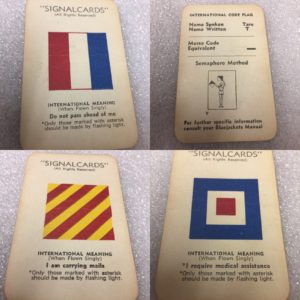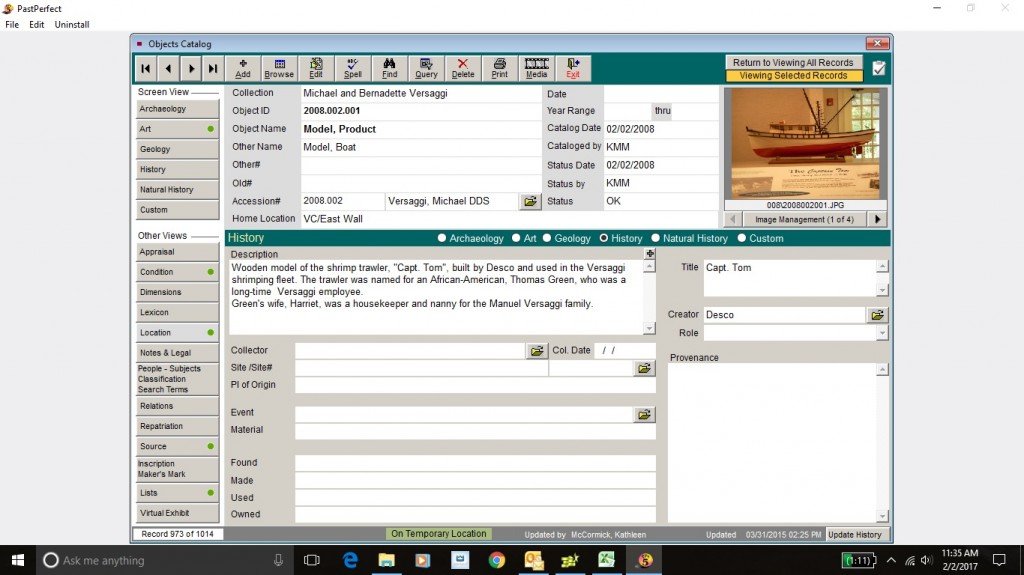Last year, the St. Augustine Lighthouse & Maritime Museum sent in an application to become an accredited museum with the American Alliance of Museums.

Our Museum is working toward accreditation with the American Alliance of Museums.
The AAM has brought museums together for over a hundred years. They have assisted with the development of standards and best practices, gathering and sharing of knowledge, as well as been a catalyst for museum advocacy.
Being an accredited AAM museum is national recognition of your museum’s commitment to excellence and highest professional standards with regards to museum operation and public service.
In the United States, accreditation is one of the highest honors a museum can receive, and only around 1,000 museums are accredited. Additionally, accreditation provides access to more resources to better serve the public trust through our mission to preserve the stories of the Nation’s Oldest Port.
What is the application process for AAM accreditation?
The application process for the AAM is rather simple on paper. The first part is to evaluate your core documents. The AAM scrutinizes every document that governs the museum. The core documents include: Mission Statement, Institutional Code of Ethics, Strategic Institutional Plan, Disaster Preparedness/Emergency Response Plan and the Collections Management Policy.
Of those, the biggest concern to us as the collections department is the Collections Management Policy (CMP). Approved by the board of trustees the CMP is what directs the collections department. It details what and how the museum acquires objects for the collection. It reflects all of the industry standards that the AAM has set forth to ensure the safety and preservation of the objects in our care. With your documents in hand you are ready to send in your application.
Once approved, you have one year to complete a self-study of your collection. This is the stage that we are in currently.
What is the state of our collection?
 Over the last several months we have been assessing the state of the collection.
Over the last several months we have been assessing the state of the collection.
We have completed a physical inventory of objects and records to determine what direction we need head towards. We are looking to make sure that each object/archive/photograph in a collection has the following: a Deed of Gift/Loan Agreement (paperwork that will give us provenance and a legal right to have in our collection,) an Accession Number (a number assigned for inventory purposes,) a physical label, and a database record (a digital record used for inventory and research purposes).
It is not uncommon for there to be gaps in the system and accreditation process helps to find those gaps. The process resolves human error typically involving clerical problems. Some items have accession numbers and no labels or database records. Some have records that need to be completed or updated.
This is not surprising at all as every museum has a back-log of items that have been donated that have not been fully processed. After the evaluation is done a strategic plan is formed to determine how long it will take to get the collection completely up to date. This could be a year or five plus years depending on the state of your collection. When we have our plan completed we move on to the next stage, the peer review.
Next steps: Peer review
A peer from an AAM accredited museum is assigned to review your museum. Over several days they will analyze core documents, tour the collection, meet with the board and staff, and advise on where the museum needs to improve. Then they will make a recommendation to accept or decline the museums application.
The process is long and arduous, however, in the end it will be great to have the AAM accreditation!
Barb Holland joined the St. Augustine Lighthouse & Maritime Museum family in 2012 and currently works as the Collections Manager. She has a bachelor’s degree in history from Aquinas College in Grand Rapids, Michigan.


